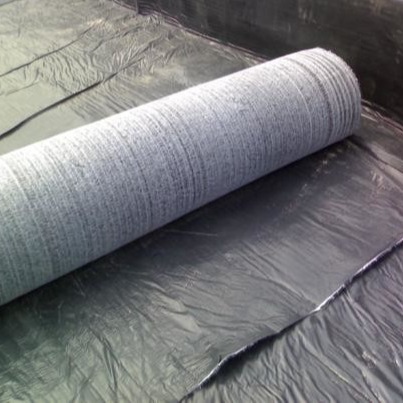
Geosynthetic clay liners, bentonite liners, clay liners, and compacted clay liners are essential materials used in civil engineering and environmental protection projects aimed at controlling water infiltration and preventing contaminant migration into the ground while preserving water resources. These liners provide high-performance barriers against fluid movement, and the choice of specific liner type depends on environmental conditions and project specifications. A geosynthetic clay liner (GCL) is a composite material consisting of a layer of bentonite sandwiched between two layers of geotextiles. Bentonite has unique swelling properties when it comes into contact with water, creating a natural waterproof barrier that effectively prevents fluid penetration. Due to its lightweight and flexible nature, GCL is a popular choice for projects that require a durable and adaptable isolation solution, such as landfill containment, reservoirs, ponds, and other critical environmental applications. Bentonite liners are particularly effective because bentonite clay naturally expands upon hydration, filling any gaps and sealing off potential leak paths, which makes it a suitable choice for diverse applications where long-term containment is essential. Clay liners, especially compacted clay liners, rely on densely packed layers of natural clay material, which creates a low-permeability barrier. This type of liner is typically used when there is an abundant supply of local clay material and is suitable for creating stable, thick barriers to inhibit water flow. Compacted clay liners (CCLs) are often formed by placing clay in layers and compacting each one, ensuring optimal density and low permeability. However, compacted clay liners require more labor-intensive installation compared to geosynthetic clay liners, as they must be carefully compacted to achieve the desired density and prevent cracking that could lead to seepage. When choosing between these liner options, considerations such as site conditions, installation requirements, environmental regulations, and project budget all play critical roles. geosynthetics clay liner Geosynthetic clay liners, with their ease of installation and high containment capabilities, are frequently chosen for applications where construction speed and material consistency are essential. In contrast, compacted clay liners may be preferred in projects where natural clay is abundant and where a thicker barrier is needed. Each liner type serves the same purpose of containment and environmental protection, yet their different properties and installation methods make them suitable for a variety of engineering and environmental management applications, from landfill covers to water reservoir linings, mining operations, and infrastructure projects focused on sustainability and environmental preservation.



![Poczta Polska zapowiada ogromne zniżki! Pamiętaj, iż termin mija 25 stycznia! [16.01.2025]](https://static.warszawawpigulce.pl/wp-content/uploads/2023/07/Poczta-Polska.jpg)









![Polacy tłumnie ruszyli do urzędów. Czas na uniknięcie ogromnego podatku tylko do 30 stycznia [16.01.2025]](https://static.warszawawpigulce.pl/wp-content/uploads/2024/09/Kolejka-kolejki-urzad.jpg)


